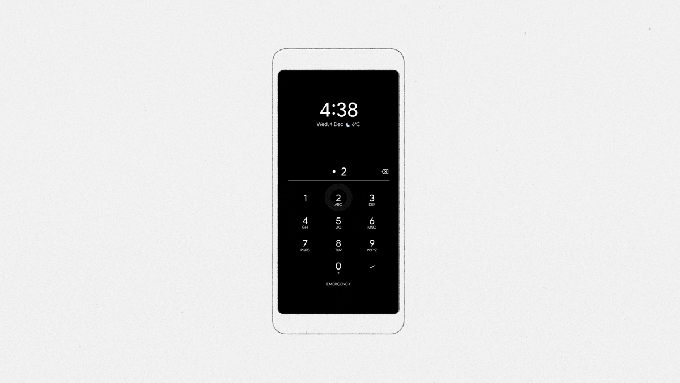In October, Google debuted experimental apps focused on digital well-being, including one that offered a notification mailbox, another that tracked how long you went between phone unlocks and even one that let you print the information you needed from your phone for the day so you wouldn’t have to use your phone, to name a few. Now, Google has added three more apps to its unique collection with the launch of a Screen Stopwatch for tracking screen time, another that lets you visualize your phone usage as bubbles and a third that lets you put your phone in an envelope… wait, what?
Envelope is not a joke, as it turns out, but rather the latest bit of creativity from London-based design studio Special Projects. The group had already created the phone info printout app, Paper Phone, which arrived when Google’s Digital Wellbeing Experiments platform first launched last year.
The team’s new Envelope app helps you to still use your phone for basic functions, like making or receiving calls or using the camera to take photos. But all this is done from inside a paper envelope custom-designed for your phone. To wrap up your phone, there’s a printable PDF for Google Pixel 3a phones that you print at full scale, then cut, fold and glue. The end result is a paper phone sleeve that leaves room for the camera and offers a numerical keypad on the front, in case you need to make calls.
The app, meanwhile, helps to make the buttons light up to be seen through the paper.
Envelope is clearly more of a design experiment rather than a practical tool. While touchscreens do work through paper, wrapping your phone up for the day will certainly complicate things — like when you need to get someone’s phone number (because no one memorizes these anymore!) or to look up directions, among other things. But it would allow you to challenge yourself to see how long you could make it before ripping the envelope open, we suppose.
Another new app, Activity Bubbles, creates a new bubble for each phone unlock during the day. The bubble then grows larger the longer you use your device. Your bubbles can be set as a live wallpaper so you can continually keep track of your screen time.

Screen Stopwatch tracks how long you’ve been on your phone each day by counting the hours, minutes and seconds of screen time with every unlock. This, too, can be set as a live wallpaper so you can see your phone usage grow throughout the day.

These latter two apps were put out by Google Creative Lab, as were many of the first apps launched last fall.
Google explained at the time the goal with its Digital Wellbeing Experiments is to inspire designers and developers to keep digital well-being at top of mind when building technology. While some of the experiments may be “out there” — like envelopes for the phone — the overall goal is not to make these mainstream apps, but rather to get people thinking about phone and app addictions. Major tech companies, Google included, are increasingly focused on what they can do better in this area — adding features like “take a break” reminders, alerts that tell you when you’re “all caught up” with your feed or rolling out tools to help reduce screen time, like app limits or the ability to turn off distracting notifications.
The Digital Wellbeing Experiments platform is open to contributions, but new additions are reviewed before they’re added to the site, a process that could take weeks. The apps themselves will work on recent Android handsets.
